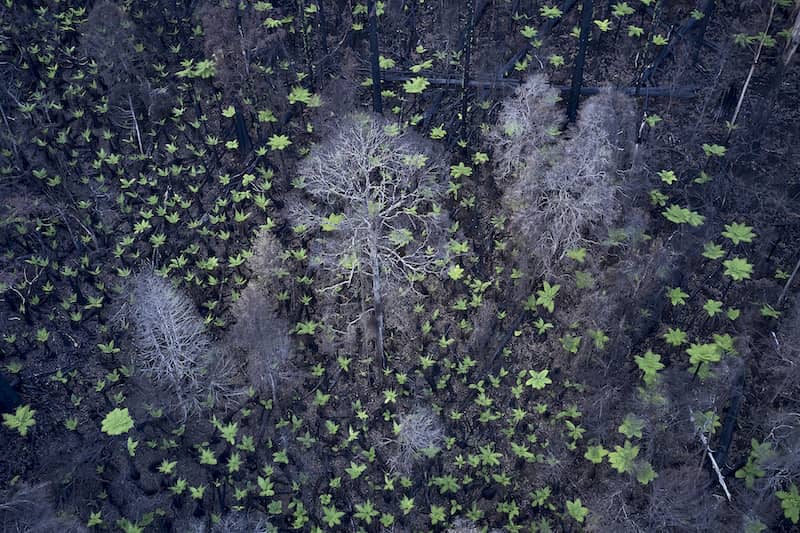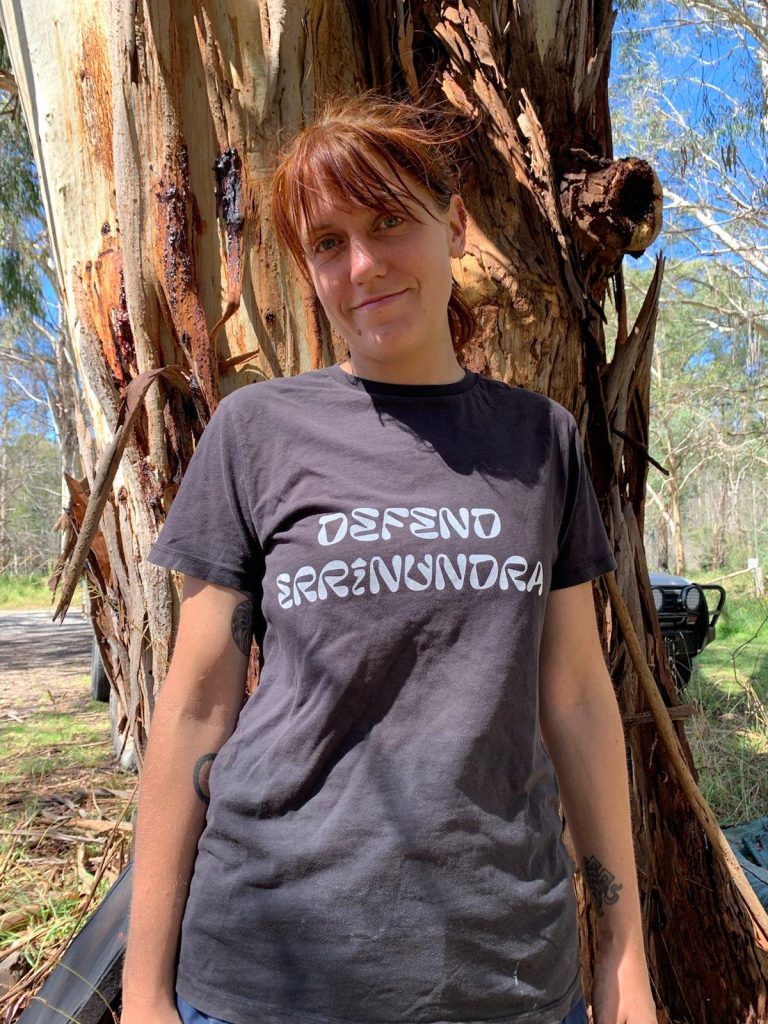For many years, protection of ‘old growth forests’ was the key message, now we must protect all remaining forests threatened by logging.
The remote town of Goongerah in far-eastern Victoria is a place most people have never heard of. I hadn’t either till the first time I went out there in Winter 2017 for a citizen science survey camp. Yet year after year, like me, hundreds of people are drawn to the town and the surrounding forests for its unique beauty, ancient forests, and threatened wildlife.
Over the last 40 years the forests and landscape have been drastically altered. Clearfell logging has decimated large swathes of areas – many of the forests end up carted on the back of log trucks to the Eden chipmill and sent overseas to make cheap packaging and paper products. When I was first taken to see these devastated areas, I couldn’t help but feel motivated by anger and grief to take action. And action can quickly turn those feelings into hope.
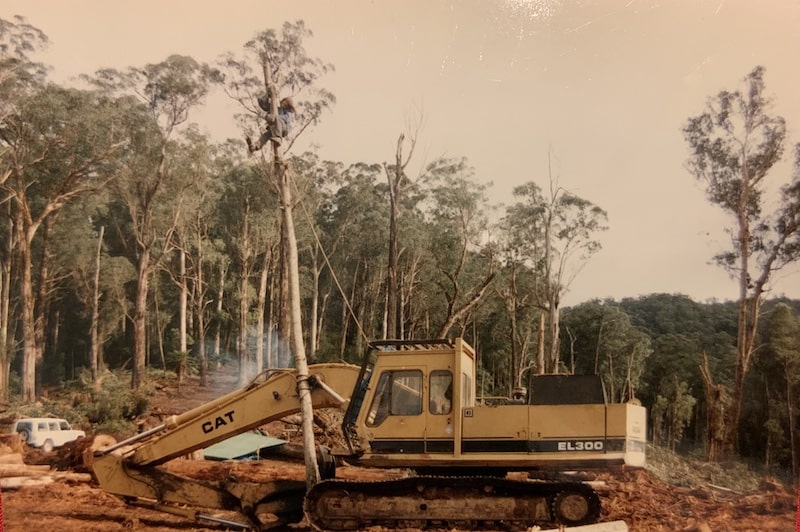
For as long as the bulldozers have threatened forests, there’s been a movement to protect them. The first forest blockades took place in the 1980s and resulted in the creation of the Errinundra National Park. With Regional Forest Agreements put in place by the state and federal governments in the 1990s came unlimited wood chipping and more direct action including a five-year blockade at Goolengook, and eventually more forest protection due to community protest, citizen science and lobbying.
Hundreds of people passionate about forests have come through the remote town of Goongerah. Environment groups like Goongerah Environment Centre and Environment East Gippsland have tried just about every trick in the book to stop logging and protect East Gippsland’s ancient forests rich in biodiversity. There have been plenty of wins, but certainly some devastating losses along the way.
The long fight for protection of old growth forests
Since the 1980s large areas of forests in East Gippsland have been drastically impacted by clearfell logging – largely fuelled by a 30-year agreement between Nippon paper and the Victorian state government to supply a yearly quota of wood chips for the production of paper and cardboard products.
For many years, the protection of ‘old growth forests’ was the key message of the campaign to protect East Gippsland’s forests. The term ‘old growth’ refers to forests largely undisturbed by intense bushfires or past logging. East Gippsland was renowned for its old growth forest, with large tracts largely unchanged for tens of thousands of years, and internationally recognised as a biodiversity hotspot.
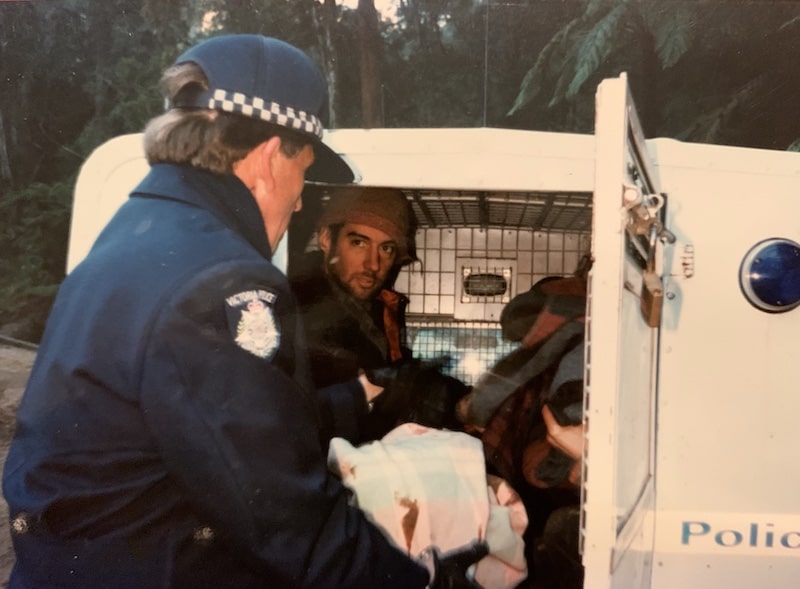
A thirty-year public campaign that included non-violent direct action protests in the 1990s and 2000s, citizen science, and a landmark court case put forward by environment group Fauna and Flora Research collective, put years of pressure on the Victorian state government to end unlawful old growth forest logging.
After years of campaigning, in November 2019 the Victorian government made an announcement that all old growth forests, approximately 90,000ha of what remained, would be protected. Old growth forest logging had finally ended – but had it?
Conservation groups sounded the alarm when it became clear the Victorian Environment Department was not going to protect all the mapped old growth as the government had initially promised.
Since that commitment in 2019 old growth logging has continued in East Gippsland, within and outside the mapped old growth, under a new and misleading classification of old growth forests. Instead of protecting the 90,000ha of the government’s mapped old growth, the Department of Land, Water, and Planning (DELWP) has made much of this available for logging. By making an administrative change in the way old growth forest is defined and creating a new (and controversial) field verification tool they’ve allowed logging to continue.

The guide uses an arbitrary set of new criteria that old stands of forest must meet in order to qualify the area for protection and was designed based on a guide developed by the logging agency itself, to allow logging in old growth forests, and not based on conservation science or pre-existing criteria for old growth forests.
In 2017, the Fauna and Flora Research Collective (FFRC) represented by Environmental
Justice Australia (EJA) launched a landmark Supreme Court case against the Victorian state government logging agency VicForests and the Environment Department over their failure to protect the legal minimum requirement of 60% of old growth Wet and Damp forests in East Gippsland.
Appreciating this read? Be sure to CHIP IN to help fund future articles from Green Agenda.
The judgement was still reserved when the government made their old growth forest announcement in 2019, and the Environment Department reopened the case to include evidence about the old growth tool, resulting in a second trial in December 2020. The validity of the tool to determine whether a forest stand is old growth was contested in court and FFRC are still waiting for a judgement on the case. In the meantime, old growth forest logging has continued in Victoria despite the promise to protect it.
The focus has shifted – we now need to fight to protect every bit of forest that’s left.
The Black Summer bushfires
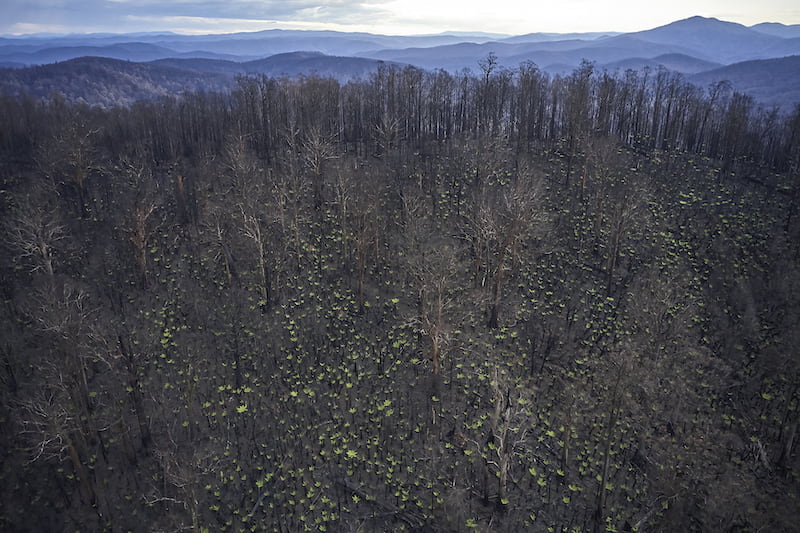
Following the government’s announcement in 2019, eastern Victoria was hit by one of the biggest bushfires in living memory. The Black Summer bushfires over the summer of 2019-2020 devastated communities and the surrounding forests.
Goongerah was one of the worst hit with many people from the community losing their homes. The impacts on forests and wildlife were profound. Many areas that GECO had campaigned to protect were burnt. One of the worst hit areas was Kuark forest – an area GECO had campaigned for protection of for a number of years because of the area’s high biodiversity values and the presence of rare crossover warm and cool temperate rainforest found nowhere else in the country.
Visiting these areas after the fires was one of the hardest moments of profound grief I’ve ever felt. It’s hard to say whether those areas will ever recover – particularly with the future risk of more severe and frequent fires. What became clear was that everything that managed to survive needed to be protected.
But just a few months after the fires, VicForests moved in to start logging forests impacted by the bushfires, and a year later, they set their sights on some of the few remaining unburnt forest refuge areas.
In early 2020 GECO released a report with the Victorian National Parks Association and other East Gippsland environment groups to look at the impacts of the fires on forests and wildlife and identified key refuge areas. The report highlighted the continued threat of logging to survival of threatened species and their refuge areas.
The report titled ‘AFTER THE FIRES: Protecting our forest refuges – critical areas for protecting fauna and flora affected by the 2019–20 bushfires, January 2021’ reveals damaging plans by state-owned logging agency VicForests to continue to log over 20,000ha of forest across ten key refuge areas. These refuges are critical for wildlife to recover and again repopulate the vast areas where millions of animals were killed by the fires.
The 2019-20 bushfires burnt more than 1.25 million hectares of forest across eastern Victoria, pushing many ecosystems to the brink of collapse and threatening the survival of hundreds of plant and animal species. Some wildlife only found in East Gippsland’s forests had close to 80% of their home ranges burnt, much at high severity, and many rare plant species had over half of their known range impacted by fire. For most of the threatened species the report focused on, logging is listed as a major threat to their already precarious survival after the bushfires. Yet there have been no reductions or substantive changes to existing logging plans since the bushfires.
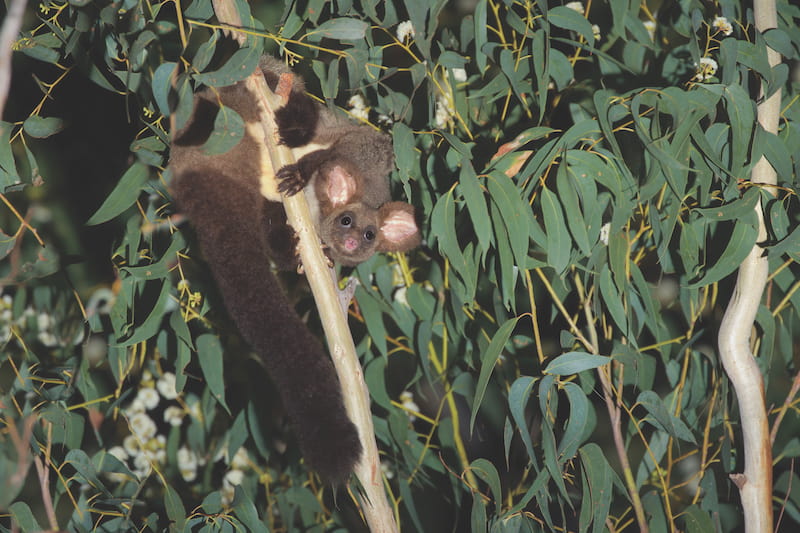
The research within the report adds to the chorus of leading scientists who have identified that key unburnt refuge areas should be the immediate and ongoing focus for conservation.The state government’s own risk assessment of threatened species and habitats carried out in October 2020 and conveniently released over the holiday break acknowledges the toll logging has on threatened wildlife. However, the government hasn’t put in place any new protections for rare animals like the Greater Glider or Sooty Owl after the fires.
The bushfires changed everything. After years of focusing on old growth forests, and with many of our “icon” areas, including Kuark, Martin’s Creek, and Goolengook, now burnt, the importance of protecting what is left has become even more urgent. Meanwhile much of the logging over the last 2 years in East Gippsland has targeted burnt forests trying to recover after the fires, under the misleading guise of ‘salvage logging’ — the most damaging form of logging there is after bushfires.
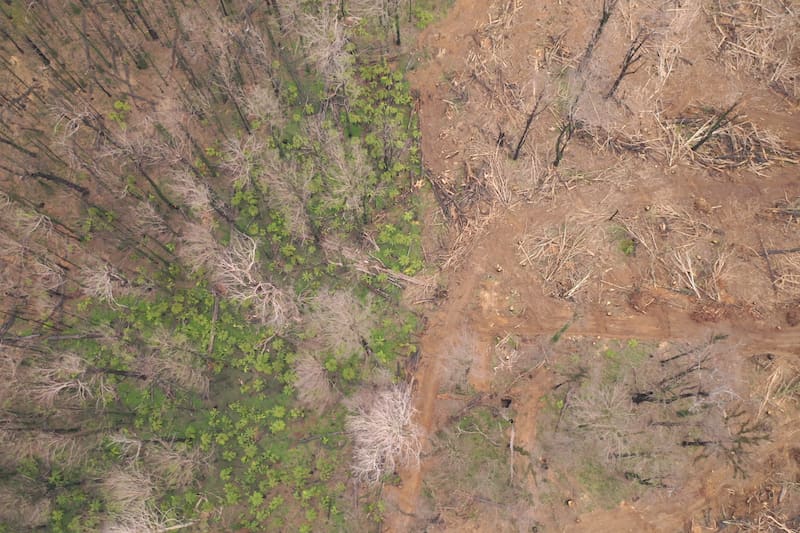
Post-bushfire logging has terminal outcomes for the environment, making areas more prone to future risk of fires and halting the recovery of the forests for up to two hundred years. In some cases, tree ferns can be all but eradicated from forests burnt and then logged. With what little unburnt forest there is left, and the rest recovering, we’re now focussing our efforts on all remaining forests, burnt or unburnt.
Defending Errinundra
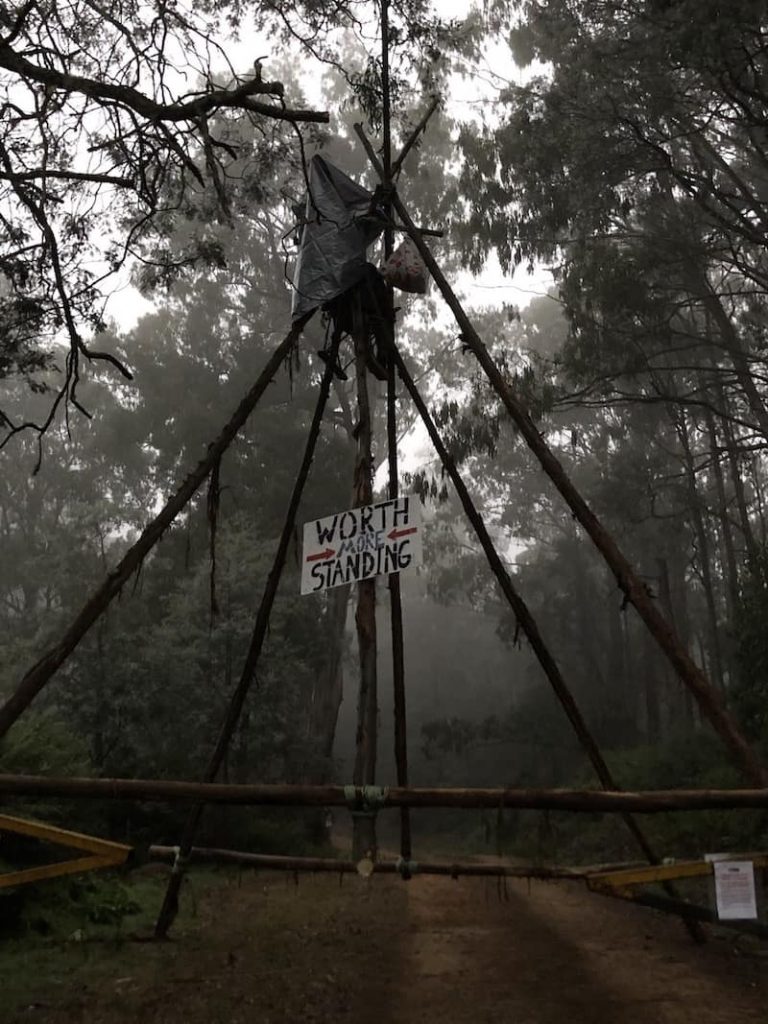
In late January 2020, just over a year after the devastating fires, the local community were horrified when VicForests began planning to start logging in the Errinundra area just north of Goongerah. The area was one of the few places that hadn’t burnt during the fires and has become a key refuge for wildlife like the Greater Glider and Large Brown Tree frog.
The community mobilised to defend the forests, setting up a tree-sit stopping the bulldozers from moving into the forests, and a permanent camp was set up to support continued direct action and protection of the forests. After 11 days occupying the tree-sit Isaac was arrested, but the actions didn’t stop there.
Appreciating this read? Be sure to CHIP IN to help fund future articles from Green Agenda.
For over four months hundreds came through to camp, supporting community action to stop the logging and oppose VicForests’ destruction of the area. The blockade held off and disrupted logging for months. Tree-sits, tripod structures, lock-ons and walk-ins were used to continuously disrupt the logging. The state government was forced to spend millions on security guards to halt people from taking action, but the protests continued.

Finally, onthe 13th of May, another local environment group Environment East Gippsland secured an injunction in one of the areas where logging had just started. The logging was stopped with bulldozers eventually leaving the area. Since the blockade two areas were taken off the immediate logging schedule. A small but significant victory.
The forests are safe for the moment while the Environment East Gippsland court case is taking place – but we remain vigilant given there are more areas still up for logging. We’ll continue the fight until the forests are permanently protected.
Bidwell-maap call for protection of Country from logging
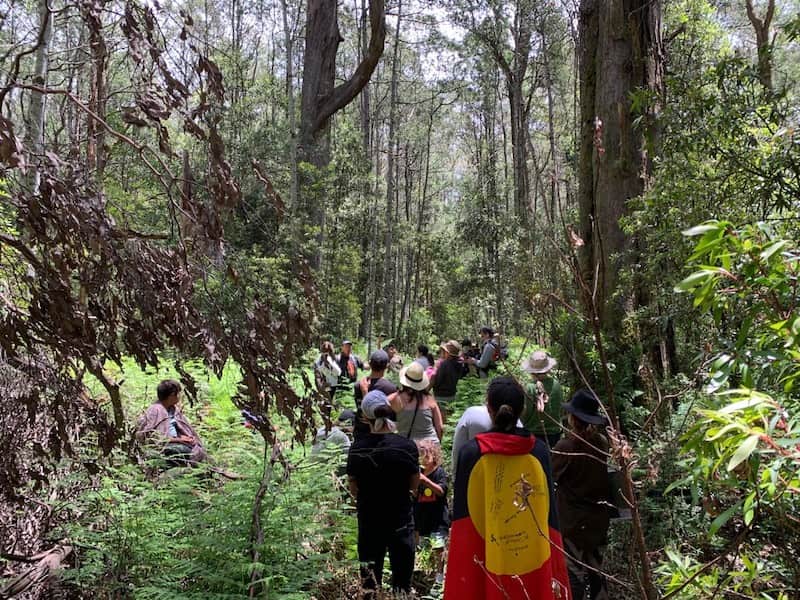
The Bidwell First Nations Peoples are one of the original custodians in so-called East Gippsland. During the Defend Errinundra campaign GECO realised that there were new logging coupes planned in and adjacent to the Bidwell Education reserve in Errinundra. In November 2020 GECO contacted Bidwell Elders who hadn’t been notified of the planned logging, nor been consulted in the planning process. The Bidwell Education reserve is one of the only places which acknowledges the Bidwell people.
The outgoing Chairperson Bevan Harrison and incoming Chairperson Harry Terrick suggested that they visit the proposed logging site on their reserve. In early December 2020, a group of 25 Bidwell family members came out to visit the Bidwell reserves, including elders, teenagers and younger children. For some of the younger ones it was their first time visiting the Errinundra Plateau.
Bidwell-Maap Elders Harry and Bevan wrote a letter condemning the logging planned in the Bidwell reserve near the Errinundra Plateau. There are two coupes planned adjacent to the reserve, access would be through a large coupe within the reserve itself.
The letter stated:
The reserve is under the custodianship of the Bidwell people, we have had no one approach us to ask for permission to go onto country. Before going onto country there needs to be consultation, there has been no consultation with Elders and Traditional Owners of the land.
The continued destruction of forests cannot continue when they need to be protected which are very significant for our peoples and our connections to country. The reserve is cultural heritage for the Bidwell people.
In 2021 not long after the letter by the elders was delivered, the state government removed the areas from the logging schedule – an incredible win for Bidwell custodians.
The current state of play – the fight for forests continues

The long fight for protection of forests is now more urgent than ever. With threats of more frequent and high-severity bushfires, fuelled by logging and climate change, and devastating decline of wildlife still threatened by logging, there has never been a more urgent time for the protection of all forests.
Communities and people usually quiet on the issue are speaking out – local councils, farmers, and cattle graziers. The bushfires were a huge catalyst for change, activating people and communities in new ways. We’ve come to realise how important these forests are given their significance for First Nations Peoples, for water security, for biodiversity, for safety against bushfires, for climate change, and for local communities and regional jobs.
The forest conservation movement has changed radically – the demands are more urgent, more ambitious, and more widely shared and supported. The state government’s policy to end native forest logging in 2030 falls far short of community expectations for an immediate end to logging. There are still thousands of areas on the chopping block.
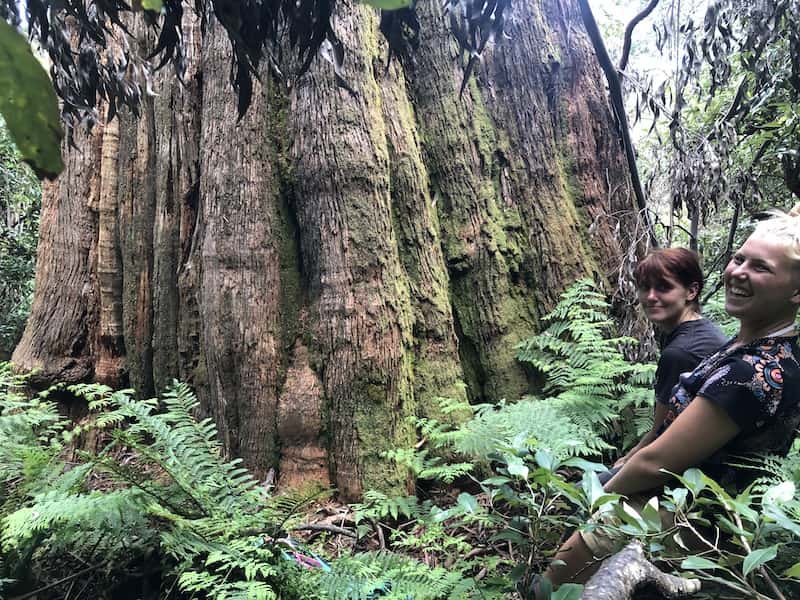
With a state election coming up in November this year, there has never been a better time to join the grass-roots movement to protect native forests.
It’s critical now that the focus on old growth forests shift to the importance of protecting all remaining forests threatened by logging. So much has been impacted by fires and logging and forests play a critical role in mitigating the impacts of climate change and storing carbon, protecting our water supply, promoting biodiversity and good green jobs. Achieving these and other important outcomes shouldn’t be limited to just the small remaining areas of old growth forests that remain. Now is the time for destructive logging to end in ALL native forests. Not by 2030. Now.
If you appreciated the read, be sure to CHIP IN, even as little as $5, to help fund future articles.
About the author:
Chris Schuringa (she/her) has been volunteering and working with GECO and a number of other grassroots forest groups campaigning for forest protection since she first visited East Gippsland five years ago.
Goongerah Environment Centre Office (GECO) is a grassroots group fighting for protection of East Gippsland’s forests. Based in the small town of Goongerah in far East Gippsland Victoria, since 1993 we have campaigned for ancient forests under threat from logging using education and public awareness, political lobbying, non-violent direct action, citizen science and forest monitoring. GECOs work takes place on the stolen lands of the Gunaikurnai and Bidwell and Monero people, where sovereignty was never ceded. We pay respect to the thousands of years of their ongoing custodianship of the land. After nearly 30 years of action, we’re not slowing down. Get involved.
